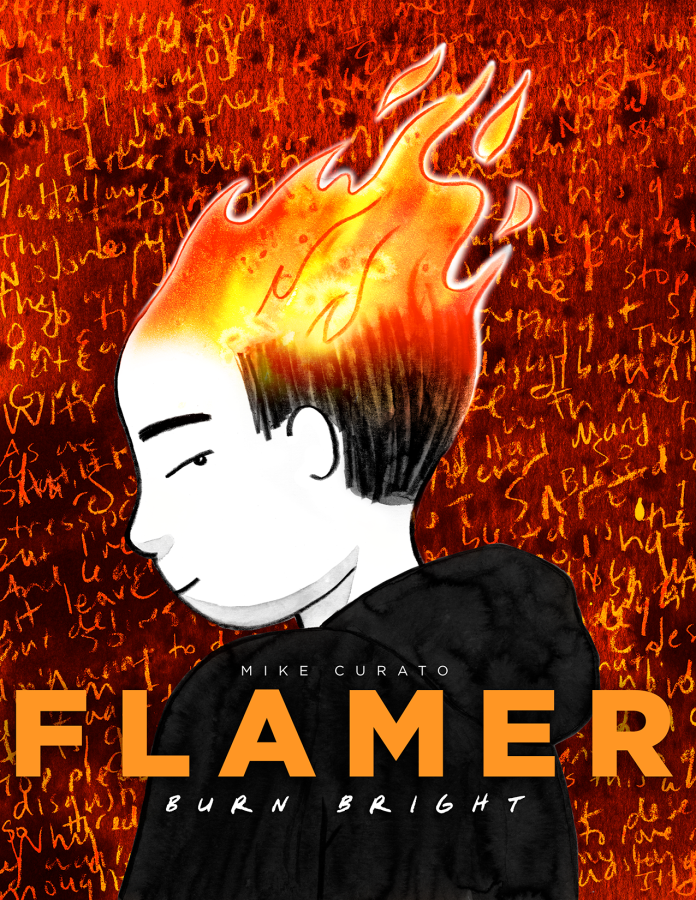Length: 368 pages
ISBN13: 9781627796415
Reading Age: 14 and up

I had a rough day one Saturday in the summer of 2021, so what I needed was something a little bit different. It had been awhile since I read a graphic novel, so I picked up Mike Curato’s Flamer, which turned out to be an absolutely wondrous but also painful read. Let’s let the pithy marketing description get this review started:
“It's the summer between middle school and high school, and Aiden Navarro is away at camp. Everyone's going through changes—but for Aiden, the stakes feel higher. As he navigates friendships, deals with bullies, and spends time with Elias (a boy he can't stop thinking about), he finds himself on a path of self-discovery and acceptance.”


As you might have guessed , the text is an exploration of a young teenager coming to terms with his budding queer sexuality. Curato employs a Boy Scout camping trip as the canvas upon which this emotional and fraught journey is painted.
Throughout the narrative, we get glimpses into Aiden’s past: his constant feelings of alienation; his shame about his body and the fact that he is overweight; and his self-denigration of his own effeminate mannerisms, a quality further policed by his male peers. Fortunately, he does have some strong friendships, but one night he ends up crossing the line with Elias, his male crush, and he has to consider not only what this friendship means now that he has complicated it, but also what do with these same-sex feelings.

Curato’s graphic novel is particularly affecting because Aiden is such an introspective and sensitive character. He fully understands that he’s not like many of his male counterparts. He wants to fit in but he can’t make himself do so. Much of this text is dedicated to struggling with the cisgender, normative masculinity that haunts Aiden.
.jpg)
The other standout aspect of this graphic novel is Curato’s artwork, which is the perfect vehicle for this story. There are often long panel sequences without any words, a quality which only enhances the poetic verve of the narrative. This text is also strongly reminiscent of other protoqueer and queer coming of age narratives such as R. Zamora Linmark’s Rolling the R’s, Rakesh Satyal’s Blue Boy, and Alexander Chee’s Edinburgh. Absolutely stunning!
Buy the book HERE.
Review by Stephen Hong Sohn
Edited by Allie Arend